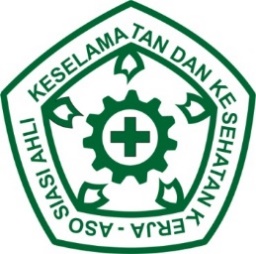Evaluasi Sediaan Krim Ekstrak Etanol Daun Tapak Dara (Catharanthus roseus L.) Sebagai Tabir Surya dalam Menghambat Pembentukan Eritema
Abstract
Keywords
Full Text:
PDFReferences
Al-Bari, A., & Saputri, R. K. (2021). Perbandingan Aktivitas Ekstrak Daun Tapak Dara (Catharanthus Roseus) dan TBHQ Sebagai Antioksidan Minyak Goreng Terhadap Fotooksidasi UV-C. Al-Kimia, 9(2), 124–134.
Alhabsyi, D. F. (2014). Aktivitas antioksidan dan tabir surya pada ekstrak kulit buah pisang goroho (Musa acuminate L.). Pharmacon, 3(2).
Amini, A., Hamdin, C. D., Muliasari, H., & Subaidah, W. A. (2020). Efektivitas formula krim tabir surya berbahan aktif ekstrak etanol biji wali (Brucea javanica L. Merr). Jurnal Kefarmasian Indonesia, 50–58.
Cipto, H., & Suriadiredja, A. (2016). Tumor kulit. Dalam: Menaldi SL, Bramono K, Indriatmi W, Editor. Ilmu Penyakit Kulit Dan Kelamin. 7th Ed. Jakarta: Badan Penerbit FK UI, 262–276.
Emri, G., Paragh, G., Tósaki, Ã., Janka, E., Kollár, S., Hegedűs, C., Gellén, E., Horkay, I., Koncz, G., & Remenyik, É. (2018). Ultraviolet radiation-mediated development of cutaneous melanoma: An update. Journal of Photochemistry and Photobiology B: Biology, 185, 169–175.
Kristanto, A., Mustaqim, W. A., Suhartono, E., & Qamariah, N. (2004). Skrining tanaman obat yang berpotensi sebagai antioksidan in vitro. Mutiara Medika: Jurnal Kedokteran Dan Kesehatan, 4(1), 5–11.
Maheshwar, G. H., Patil, B. S., & Dhumal, P. (2010). Comparative sun protection factor determination of fresh fruits extract of Cucumber vs marketed cosmetic formulation. Research Journal of Pharmaceutical Biological and Chemical Sciences, 1(3), 55–59.
Monsalve-Bustamante, Y. A., Puertas-Mejia, M. A., & Mejia-Giraldo, J. C. (2020). Comparison of the photoprotective effect between hydrolyzed and aglycones flavonoids as sunscreen: A systematic review. Journal of Applied Pharmaceutical Science, 10(1), 116–123.
Nazar, M. (2018). Spektroskopi molekul. Syiah Kuala University Press.
Prasiddha, I. J., Laeliocattleya, R. A., Estiasih, T., & Maligan, J. M. (2016). Potensi Senyawa Bioaktif Rambut Jagung (Zea mays L.) Untuk Tabir Surya Alami: Kajian Pustaka [In Press Januari 2016]. Jurnal Pangan Dan Agroindustri, 4(1).
sen Mandi, S., & sen Mandi, S. (2016). Natural Ultraviolet Radiation. Natural UV Radiation in Enhancing Survival Value and Quality of Plants, 1–22.
Siller, A., Blaszak, S. C., Lazar, M., & Harken, E. O. (2018). Update about the effects of the sunscreen ingredients oxybenzone and octinoxate on humans and the environment. Plastic and Aesthetic Nursing, 38(4), 158–161.
Sugihartini, N., & Wiradhika, R. Y. (2017). Gel formulation of ethanol extract of mangosteen peel (Garcinia mangostana L.) as a medication for burns in wistar rats. JKKI: Jurnal Kedokteran Dan Kesehatan Indonesia, 110–117.
Svobodová, A., Psotová, J., & Walterová, D. (2003). Natural phenolics in the prevention of UV-induced skin damage. A review. Biomed Pap Med Fac Univ Palacky Olomouc Czech Repub, 147(2), 137–145.
Vangipuram, R., & Feldman, S. R. (2016). Ultraviolet phototherapy for cutaneous diseases: a concise review. Oral Diseases, 22(4), 253–259.
DOI: https://doi.org/10.52364/sehati.v3i1.34
Refbacks
- There are currently no refbacks.
Copyright (c) 2023 Pelantar Press

This work is licensed under a Creative Commons Attribution-NonCommercial 4.0 International License.

Ciptaan disebarluaskan di bawah Lisensi Creative Commons Atribusi-NonKomersial 4.0 Internasional.




